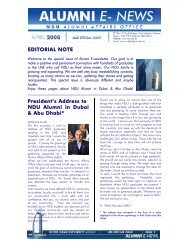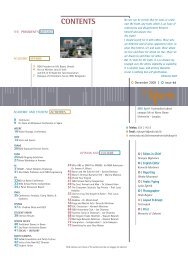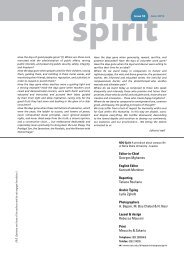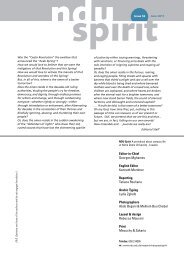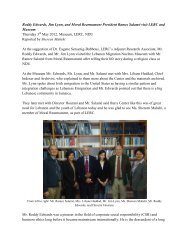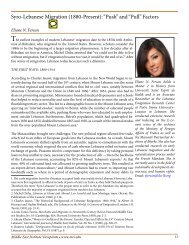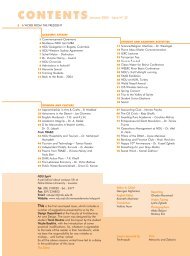OUTLINE - Notre Dame University
OUTLINE - Notre Dame University
OUTLINE - Notre Dame University
Create successful ePaper yourself
Turn your PDF publications into a flip-book with our unique Google optimized e-Paper software.
The passage was located at the edge<br />
of the old city wall and alongside the<br />
area of 19th century urban expansion.<br />
Despite the promising site, the<br />
joint-stock company had to file a<br />
petition for bankruptcy after half a<br />
year. The Wertheim Company that<br />
followed as a tenant and tried to<br />
establish a conventional department<br />
store went bankrupt before the outbreak<br />
of World War I in 1914. The<br />
bankruptcy assets went to the<br />
Commerzbank, which undertook<br />
modifications to the structure at the<br />
beginning of the 1920s. In 1928 the<br />
German AEG company took over<br />
the arcade as a tenant and established<br />
the Haus der Technik (House of<br />
Technology), redesigning parts of<br />
the complex with a view to promoting<br />
its products. The world’s first<br />
television programme was shown<br />
here to report the 1936 Berlin<br />
Olympic Games.<br />
After 1933, an increasing area was<br />
taken over by organisations of<br />
Hitler’s National Socialist Party. In<br />
1941 ownership passed to the statecontrolled<br />
labour union called the<br />
German Work Front and the Central<br />
Land Office of the SS (Storm-troopers)<br />
moved in. The building was<br />
probably used for planning and production,<br />
probably of arms. From<br />
1943 the attic was used to hold<br />
French prisoners of war and roof<br />
windows were blocked to prevent<br />
their escape.<br />
Under the German Democratic Republic<br />
In 1948 the Haus der Technik moved out of the building, which fell into disrepair<br />
because of the erection nearby of the Berlin Wall. One part was occupied<br />
by a film theatre, the School for Foreign Trade, the GDR School of Artists and<br />
a unit of the Army. Because of some wartime damage, there was partial<br />
demolition.<br />
After German reunification, on February 13, 1990 an international group of<br />
artists from the east side occupied the building as squatters. They were<br />
known as the Tacheles, this being a Yiddish word meaning free, open and<br />
explicit speech. Supporters joined them from all over the world and the<br />
Tachele charitable association was formed to promote international cultural<br />
exchange and to preserve the “art ruin” permanently. A moratorium was<br />
obtained on the demolition and subsequently the listing of the building as a<br />
historical monument. Architect Carl-Georg Schulz mediated between the<br />
squatters and the public authorities and implemented certain safety measures<br />
for which the City provided funds while minor repairs were carried out<br />
by Tacheles. Meanwhile, there was thriving cultural activity in and around<br />
the ruin, which became the scene of underground art, rock and pop, cinema<br />
and theatre performances and even new media.<br />
In 1998 a powerful German investor known as the Fundus Group became<br />
owner of the building and its surrounding area (22,000 sq.m). and Tacheles<br />
obtained a 10-year leasing contract for a symbolic rent.<br />
Early in the year 2000, the office of Carl-Georg Schulz was charged with planning<br />
the reconstruction of the building, although with a budget of only ∈5.25<br />
million there were limits imposed. The basic principles adopted were conservation<br />
and protection, without actual restoration, of the existing structure<br />
and the addition of new structural elements that were clearly and explicitly<br />
modern and new. The Tacheles Association was satisfied with the conservation<br />
of the “ruin” character, the art-friendly ambiance and an acceptable rent<br />
to pay.<br />
There will be a supermarket, retail outlets, services, trade, a hotel, a boardinghouse<br />
and residential developments together with public and semi-public<br />
open spaces. “The main really interesting counterpoint in the whole block is<br />
the lively Tacheles. It is to be hoped that the potential of this constellation<br />
will be perceived permanently.”<br />
16 NNU SPIRIT



